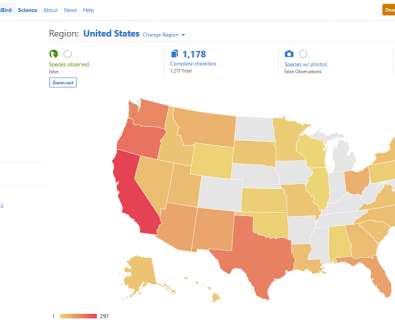My eBird 10th Anniversary
10,000 Birds
DECEMBER 23, 2019
During the decade, I submitted 1,219 checklists and observed 555 bird species, all in the U.S. After an initial period when all species are new, the lifers begin to follow a pattern. Thus, I can pinpoint my first pelagic trip, as it added 13 new species. Virgin Islands ( St. and Canada. was good for 11 lifers.












Let's personalize your content